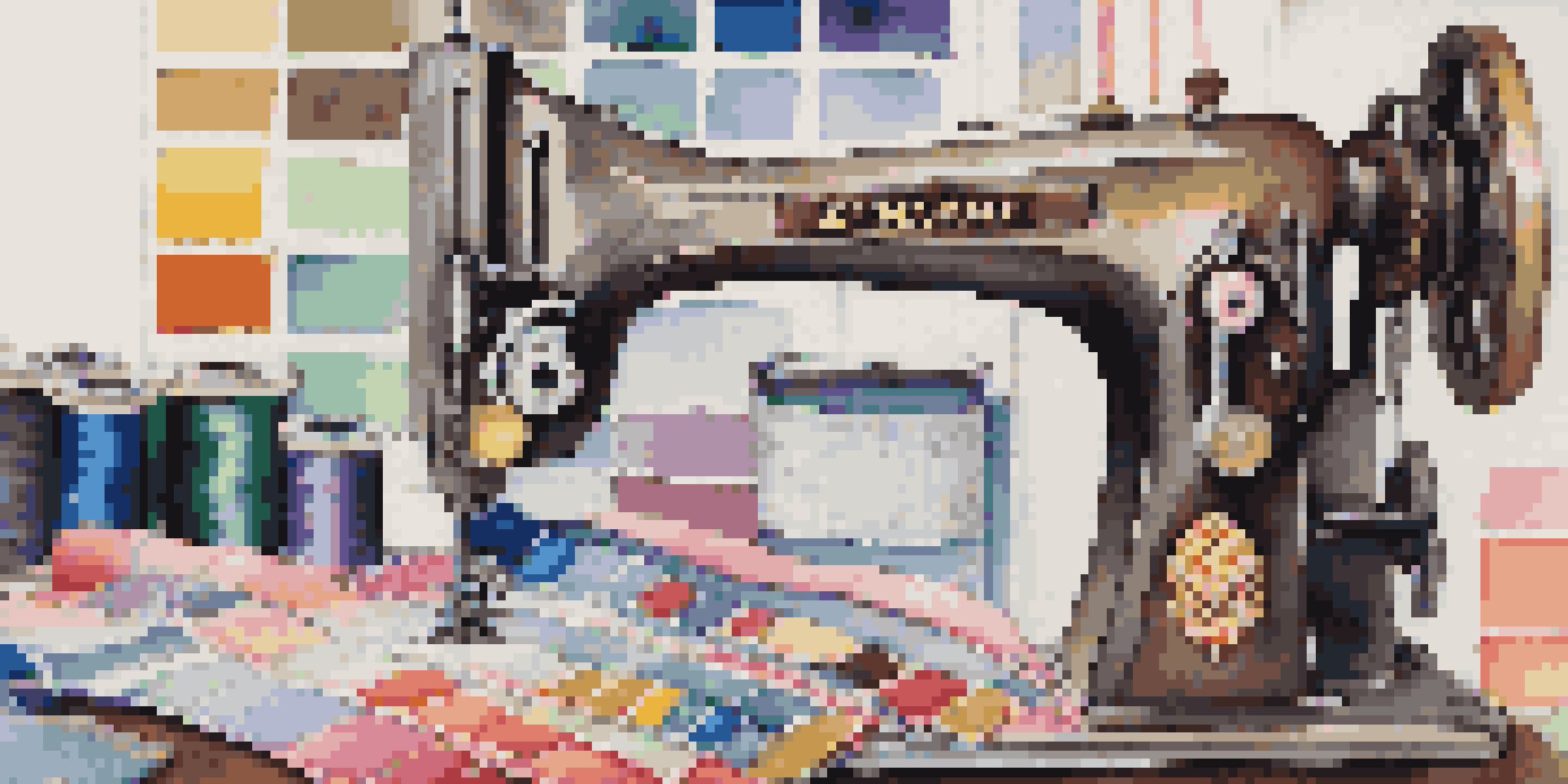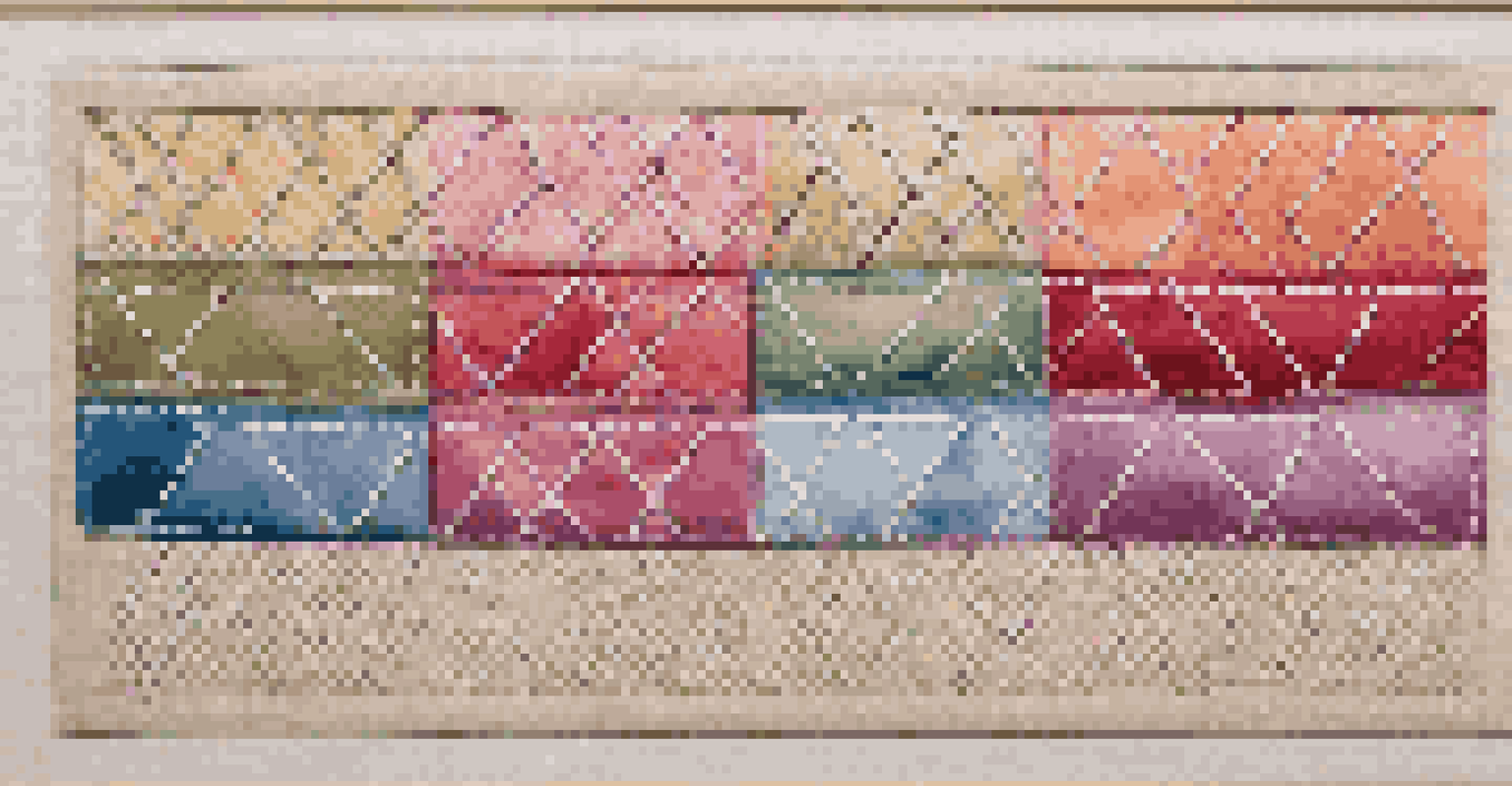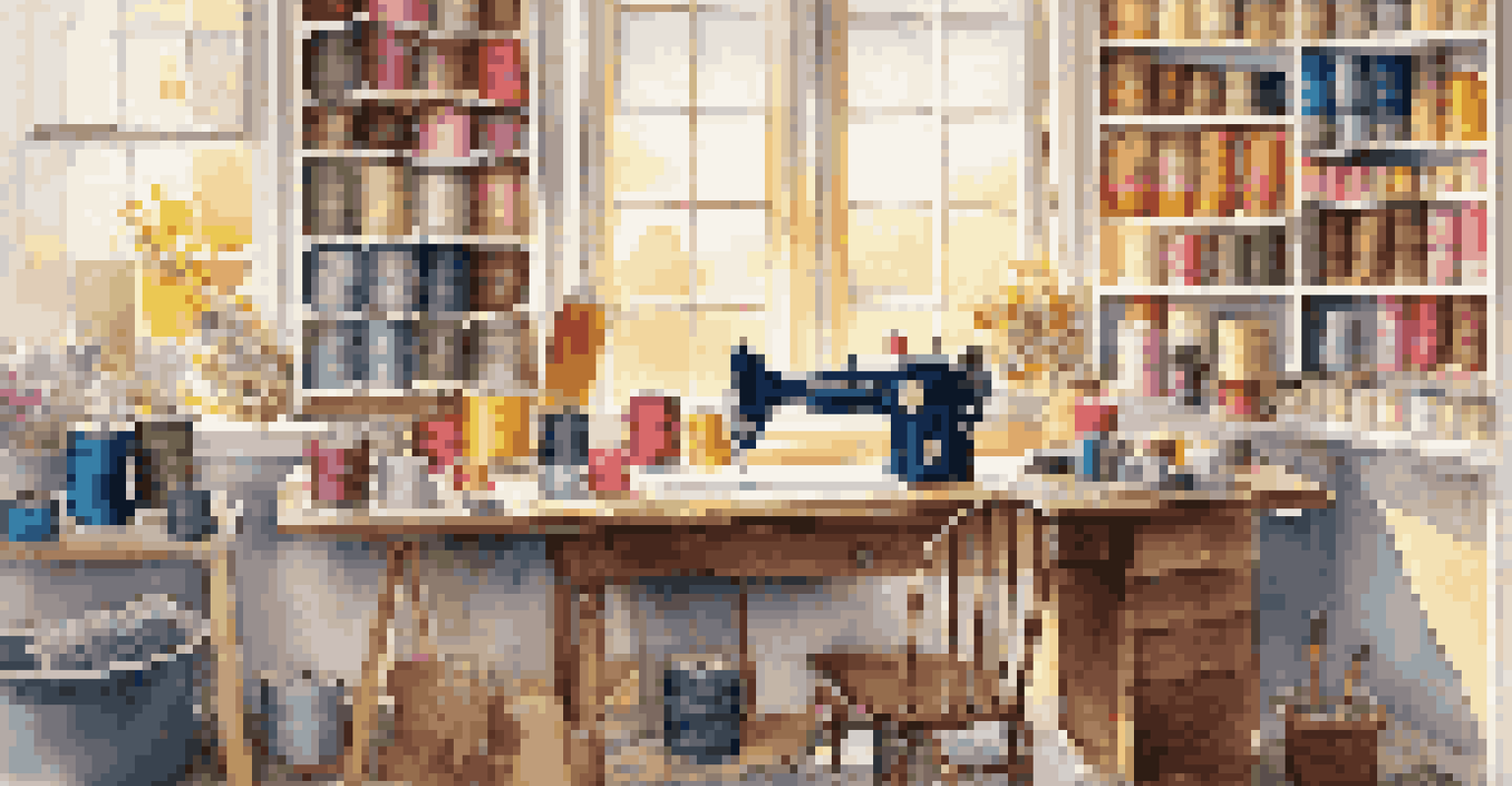Understanding the Basics of Sewing Machine Stitch Types

What Are Sewing Machine Stitch Types?
Sewing machine stitch types refer to the different ways a sewing machine can create stitches. Each type serves a unique purpose, from basic seams to decorative embellishments. Understanding these stitches is crucial for any sewing project, as they can affect the durability and appearance of the finished product.
Sewing is not just a craft; it’s a way to express your individuality and creativity.
For beginners, it might seem overwhelming to decipher the various stitch types, but think of them as tools in a toolbox. Just as you wouldn't use a hammer for a screw, different stitches are designed for different tasks. Familiarizing yourself with these types can significantly enhance your sewing experience.
In essence, knowing your stitch types allows you to choose the right one for your fabric and project, ensuring that you achieve the best results and a satisfying sewing journey.
The Straight Stitch: The Foundation of Sewing
The straight stitch is the most fundamental stitch in sewing, often the first one that beginners learn. It creates a simple, straight line and is perfect for basic seams, hems, and topstitching. Most sewing machines come with a default straight stitch setting, making it easy for anyone to start sewing.

This stitch is incredibly versatile and can be used on a variety of fabrics. Whether you're working with lightweight cotton or heavier denim, the straight stitch provides a reliable hold. It's like the bread and butter of sewing; without it, you can't build much.
Know Your Stitch Types
Understanding different sewing machine stitch types is crucial for selecting the right stitch for your fabric and project, enhancing both durability and appearance.
Moreover, the straight stitch can also be adjusted for length and tension, allowing for some customization based on your project needs. A well-executed straight stitch can make a garment look professional and polished.
Zigzag Stitch: Flexibility and Stretch
The zigzag stitch is another essential stitch type that offers flexibility, particularly for knit fabrics. It allows the fabric to stretch without breaking the seam, making it ideal for t-shirts, leggings, and other stretchy garments. The zigzag stitch creates a zigzag pattern, which can also add a decorative touch to your projects.
The best way to predict your future is to create it.
In addition to its practical uses, the zigzag stitch is fantastic for finishing raw edges to prevent fraying. Think of it as a safety net for your seams, ensuring that they hold up through wear and wash. This is especially useful for fabrics that tend to unravel easily.
You can adjust the width and length of the zigzag stitch, giving you even more control over its appearance and functionality. This adaptability makes it a favorite among sewists of all skill levels.
The Role of the Overlock Stitch in Seam Finishing
The overlock stitch, often created with a serger machine, is essential for finishing seams. It trims the fabric edges while simultaneously stitching them, resulting in a clean and professional look. This stitch is especially useful for knit and stretch fabrics, providing durability and preventing fraying.
Using an overlock stitch is like putting a protective seal on your seams. It not only enhances the garment's lifespan but also gives it a polished finish. Many sewists prefer this stitch for its efficiency and effectiveness in creating neat edges.
Adjust Length and Tension
Properly adjusting stitch length and tension can significantly impact the quality of your seams, ensuring a professional and polished finish.
While a serger is typically used for overlocking, some sewing machines come with built-in overlock stitch settings. Knowing how to use this stitch can elevate your sewing projects significantly, making them look store-bought rather than homemade.
Understanding Decorative Stitches and Their Uses
Decorative stitches add personality and flair to your sewing projects. These stitches often include patterns like flowers, waves, or intricate designs that enhance the aesthetic appeal of your fabric. Most modern sewing machines come with a variety of decorative stitch options to explore.
Using decorative stitches is akin to adding accessories to an outfit; they can transform a simple garment into something special. Whether you want to embellish a pillowcase or create unique borders on a quilt, these stitches can turn the ordinary into extraordinary.
However, it’s essential to choose the right decorative stitch for your fabric type. Some stitches may work better on thicker fabrics, while others are suited for lighter materials. Experimenting with these stitches can open up a world of creative possibilities in your sewing endeavors.
The Importance of Choosing the Right Stitch Length and Tension
Stitch length and tension are critical factors that affect the outcome of your sewing projects. The stitch length determines how close or far apart the stitches are, influencing the overall look and strength of the seam. Shorter stitches provide more durability, while longer stitches can offer a more relaxed look.
Tension, on the other hand, refers to how tight or loose the stitches are when sewn. Proper tension ensures that your stitches lie flat and evenly, preventing puckering or loose seams. Adjusting these settings based on your fabric type and project requirements can make a significant difference.
Avoid Common Sewing Mistakes
Being aware of common mistakes, such as using the wrong stitch for the fabric or neglecting to adjust settings, can lead to better sewing outcomes and a smoother experience.
Think of stitch length and tension as the fine-tuning of a musical instrument; getting them right can create a harmonious sewing experience. Understanding and adjusting these elements will help you achieve professional-looking results in your sewing projects.
Common Mistakes to Avoid with Stitch Types
Even seasoned sewists can make mistakes when it comes to choosing stitch types. One common error is using an inappropriate stitch for the fabric, which can lead to seam failure or a less polished finish. Always consider the characteristics of the fabric and the purpose of the stitch before starting your project.
Another mistake is neglecting to adjust stitch length and tension, which can result in uneven seams or puckering. Taking the time to test your settings on scrap fabric can save you from a frustrating outcome later on. This step is especially important when working with unfamiliar fabrics.

Lastly, be mindful of the thread type you’re using, as it can impact the final result. Using the wrong thread can lead to tension issues and affect the overall durability of your seams. By avoiding these common pitfalls, you can enhance your sewing experience and achieve the best results.
Conclusion: Mastering Stitch Types for Better Sewing
Understanding sewing machine stitch types is essential for any sewist looking to improve their skills. Each stitch serves a unique purpose, from basic seams to decorative embellishments, and knowing how to use them effectively can elevate your projects. The journey of learning these stitches is both rewarding and essential in achieving the desired results.
As you explore the world of sewing machine stitches, remember that practice makes perfect. Don’t hesitate to experiment with different types and settings to discover what works best for you and your projects. This hands-on experience will build your confidence and skill level over time.
Ultimately, mastering stitch types will not only enhance your sewing technique but also bring your creative visions to life. So gather your fabric, thread, and sewing machine, and start stitching your way to success!